Home
ABOUT
BIOGRAPHY
WORK
CONTACT

Home
ABOUT
BIOGRAPHY
WORK
CONTACT
スマホでご覧の方は、
画面を横向きにするとより見やすくなります。
Read the passage and choose the best answer among the four choices for each question.
Who has been the most spectacularly ostracized in history? It must be Pluto.
Pluto was discovered in 1930 by an American astronomer, Clyde Tombaugh. Since then, it has been widely known as the ninth planet of the solar system. Its name is inspired by Pluto, the god of the underworld in Roman mythology. It is about 4.8 billion kilometers from Earth, and, even at the speed of light, it would take four and a half hours to get there. However, in 2015, NASA’s New Horizon spacecraft finally arrived at this celestial body after nearly a decade. When Pluto was first discovered, it was thought to be a rather massive object, but its mass and size, in fact, were much smaller than expected. Its diameter is only 2,370 km, which is smaller than the Moon. In addition, other objects that are about the same size as Pluto were discovered one after another from the 1990s onward. Consequently, there has been sensational debate over whether these objects should be officially considered planets or not. Eventually, at the IAU General Assembly in Prague, Czech Republic, in 2006, a category of “quasi-planets”, subordinate to the category of “planets”, was created, and Pluto was classified in this new category.
Famous mnemonics for remembering the names of the planets and their order from the sun exist in both Japanese and English, but the last word of these, of course, had to be removed. In English, it is “My Very Educated Mother Just Served Us Nine Pizzas” (the first letter of each word corresponds to that of each planet). However, with “Pizzas” gone, we no longer know what my mother has given us nine of. The search for possible candidates for the new ninth planet has been ongoing, but scientists have yet to find a strong candidate. If the first letter of the new planet is A, I hope it will be ( ① ), not ( ② ).
Practice!
Q1. How long did it take NASA’s spacecraft to arrive at Pluto?
Q2. What is true of Pluto?
Q3. Fill in the blanks ① and ② with the correct answer.
解答
Q1. 3
Q2. 3
Q3. 2
解説
Q1.
第1段落5文目に、”NASA’s New Horizon spacecraft finally arrived at this celestial body after nearly a decade”とあり、NASAの惑星探査機が冥王星に到達するのに、10年近くかかったことが説明されている。
Q2.
第1段落10文目で、冥王星が、”quasi-planets”という新しいカテゴリーに分類されたと言及されており、以降は惑星ではなくなったことが読み取れる。
Q3.
この問題は、言い換えると、“My Very Educated Mother Just Served Us Nine Pizzas”の”Pizzas”の部分に、代わりにどのような言葉が入るのが適切かという事を問うている。単語の最初の文字がAであるという条件があるため、解答は1か2に絞られるが、ほとんどの人はアリよりもリンゴの方を好んで食べる(はずである)ので、2が正解。
解釈
第1段落




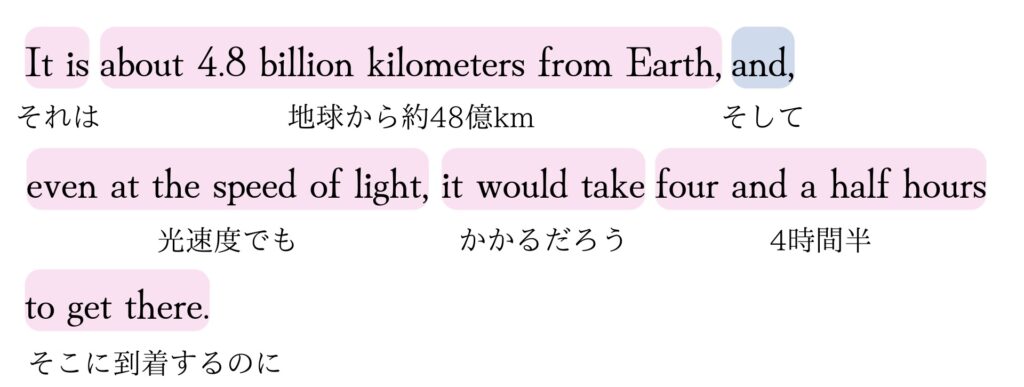





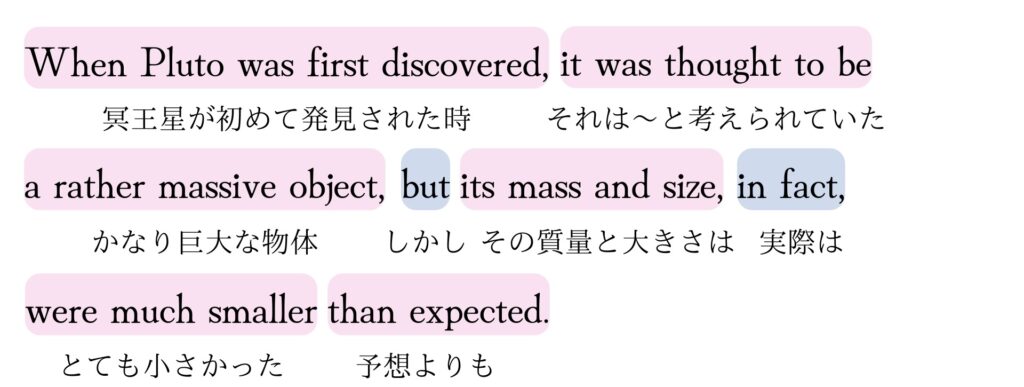







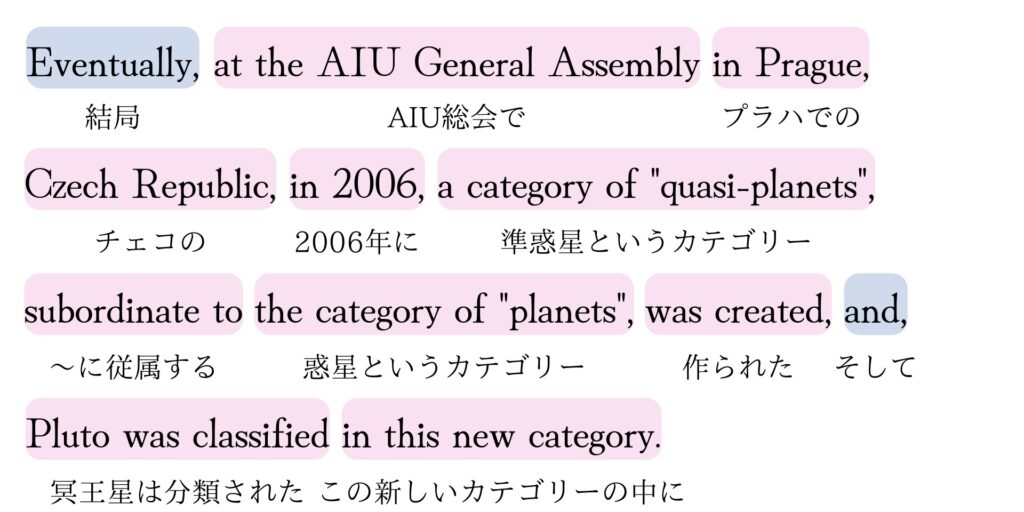

第2段落
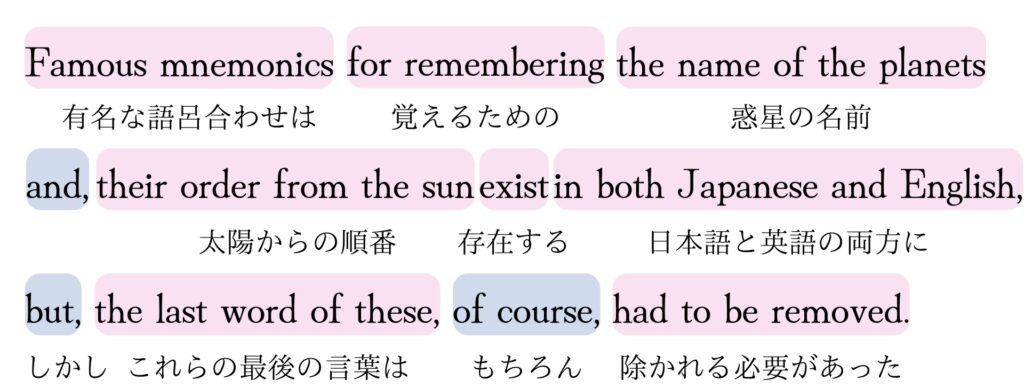

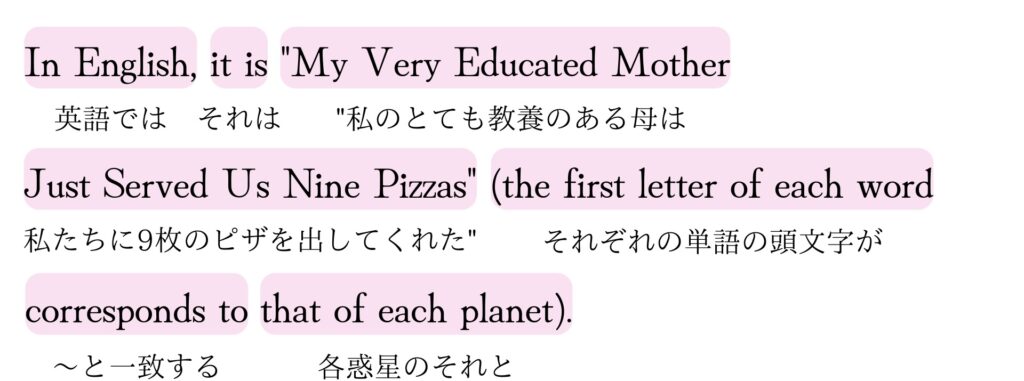



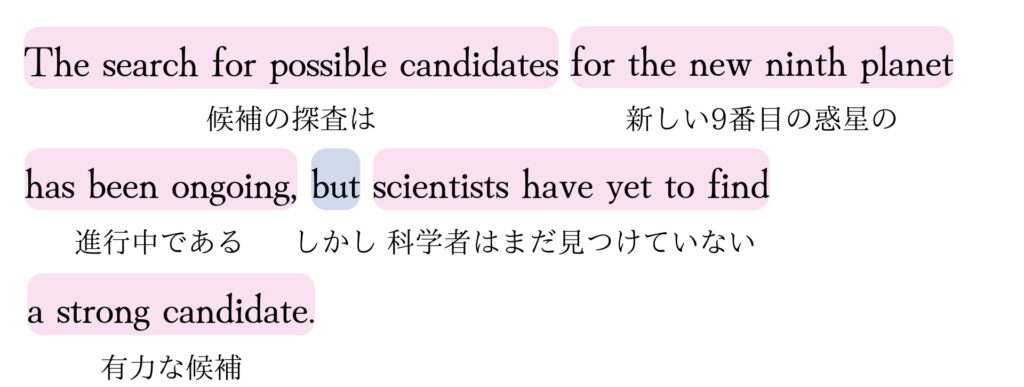



全訳
冥王星は1930年にアメリカの天文学者であるクライド・トンボーに発見され、それ以来太陽系の第9惑星として広く知られていた天体である。その名前はローマ神話に登場する冥府の神であるプルートーがモチーフとなっている。地球からは約48億kmも離れており、光の速度でも到着するのに4時間半かかってしまう。しかし、2015年にはNASAの惑星探査機である”ニューホライズン“が10年近い年月を経てこの天体へ到着した。冥王星の発見当初は、かなり巨大な天体だと思われていたものの、実際は予想よりも遥かに質量と大きさは小さかった。直径は2370kmしかなく、これは月よりも小さい。これに加えて、1990年代以降には冥王星と同じ大きさの天体が次々と発見されていき、これを公式に惑星と見なすかどうかという論争が激化していった。結局、2006年にチェコのプラハで開かれたIAU総会にて、”惑星“というカテゴリーに従属する”準惑星“というカテゴリーが設けられ、冥王星はここに分類すると定義された。これらの過程を経て、冥王星は惑星から仲間外れにされることとなった。
惑星の名前と太陽からの順番を覚えるための有名な語呂合わせは日本語にも英語にもあったが、当然これらの最後の一個を消さなければいけなくなった。英語では、My Very Educated Mother Just Served Us Nine Pizzas(それぞれ単語の頭文字が惑星の頭文字と一致する)というが、Pizzasがなくなってしまい、母が何を9個くれたかがわからなくなってしまった。新しい第9惑星の候補となりそうな天体の探査は続けられているが、未だに有力なものは見つかっていないそうだ。もし新しい惑星の頭文字がAならば、アリではなくリンゴにしていただきたいものだ。
[swpm_login_form]